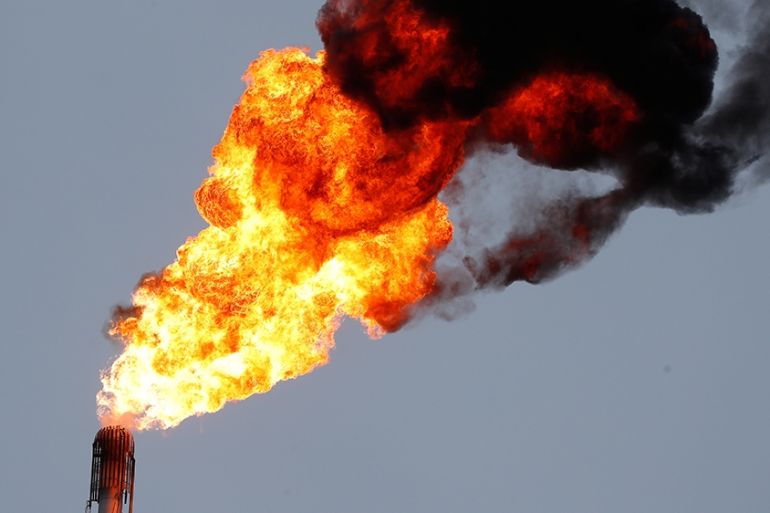Russia has OPEC over a barrel as cartel agrees to deep oil cuts
OPEC has agreed on a large output cut of 1.5 million bpd, but only if Russia joins in.

Against a backdrop of ebbing energy demand as the coronavirus outbreak sweeps the globe, OPEC on Thursday agreed to cut the output by an extra 1.5 million barrels per day (bpd) in the second quarter of this year – but only if Russia joins in.
The oil demand outlook has been hit hard by measures to halt the spread of the virus that are disrupting factories, deterring people from travelling and slowing other business activity. Forecasts for crude demand growth in 2020 have been slashed as a result.
Keep reading
list of 3 itemsBefore OPEC meeting, Russia is cagey about more oil cuts
Coronavirus fears have oil prices over a barrel
Saudi Arabia has been pushing OPEC and its allies, a grouping known as OPEC+, for a big cut up to 1.5 million bpd for the second quarter of this year while extending existing cuts of 2.1 million bpd, which expire this month, to the end of 2020.
But the kingdom and other cartel members have struggled to persuade Russia to support the move. Moscow has until now indicated it would back an extension but not a new cut.
In the past, Russia has hesitated in joining OPEC in cuts, only to sign on at the last minute.
Ministers from OPEC+ meet on Friday in Vienna.
The coronavirus outbreak created an “unprecedented situation” with risks “skewed to the downside” and demanding action, OPEC said in a statement after its ministers met.
It said ministers agreed to an extra supply cut of 1.5 million bpd until June, out of which non-OPEC states are expected to contribute 500,000 bpd. The group said this was in addition to extending existing supply curbs to the end of 2020.
OPEC said it would hold another ministerial meeting on June 9.
Cartel sources have previously signalled that preliminary discussions with Russia about the cuts held this week in the Austrian capital had been trickier than before.
“The worst-case scenario is an extension,” said an OPEC source when asked by Reuters news agency what would happen if Russia refused to join a new cut on Friday.
The proposed OPEC cut, if approved, would be towards the top end of market expectations. If OPEC+ was to decide to remove an extra 1.5 million bpd from the market, it would bring the group’s overall output reduction to 3.6 million bpd or about 3.6 percent of global supplies.
The last time OPEC reduced supplies on such a scale was in 2008 when it cut production by a total of 4.2 million bpd to address slower demand because of the global financial crisis.
Brent oil prices pared gains by 13:00 GMT, trading near $51 a barrel after an initial 0.6 percent rise on news of OPEC’s plan to cut, highlighting the uncertainty about the real impact of the virus on global demand as it continues spreading.
Oil prices are down about 20 percent since the start of the year, making it tough for OPEC states to balance their budgets, while Moscow has said it can cope with current prices.
Russian Energy Minister Alexander Novak returned to Moscow for consultations on Wednesday after this week’s talks in Vienna and will be back in the Austrian capital on Friday for the broader OPEC+ meeting.
“OPEC+ have little choice but to cut output substantially given the virus-related demand losses,” said Gary Ross, founder of Black Gold Investors.
“The Saudis have accounted for over half the officially agreed cuts and they will lead the way with additional cuts and the others, including Russia, will join because it is overwhelmingly in their economic interests,” he said.
On Tuesday, Goldman Sachs lowered its outlook for global benchmark Brent crude, saying to fall to $45 a barrel in April – its second downward revision in less than a month.